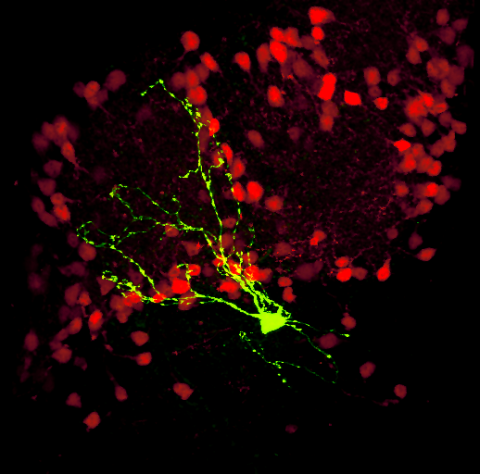Supervisor: Elisa Galliano
Co supervisor: Sue Jones
Heterogeneity and plasticity of dopaminergic neurons
In the mammalian brain, the majority of dopaminergic (DA) neurons reside in the midbrain (Substantia Nigra pars compacta, and the Ventral Tegmental Area), the olfactory bulb and the diencephalon. Midbrain DA neurons exhibit different protein expression, neurotransmitter co-release and projection target pattern[1]. In the olfactory bulb, dopaminergic neurons are found to exist in two subclasses, in a process known as adult neurogenesis[2]. Given the heterogeneity of dopaminergic neurons within and across brain regions, can a given population of dopamine neurons substitute for another, for example in transplant studies? Or are different dopaminergic neuron populations functionally completely distinct?
The first goal of this project will be to use whole-cell patch clamp recording in acute brain slices from transgenic mice to electrophysiologically profile the different populations of dopaminergic neurons, and to determine whether heterogeneity in dopaminergic neurons within each brain region is related to morphology and/or synaptic connectivity.
The second goal of this project is to study how different activity-dependent plastic changes (synaptic, intrinsic, structural) occur in each dopaminergic population. Initially activity-dependent plasticity will be induced optogenetically in acute brain slices, and plasticity assessed electrophysiologically and morphologically. We will then move in vivo by inducing plasticity with behaviourally relevant paradigms, such as olfactory deprivation/enrichment, and the systemic delivery of drugs of abuse that cause neuronal and behavioural plasticity in midbrain dopamine reward pathways[3].
Relevant references:
1. M. Morales and E. B. Margolis, ‘Ventral tegmental area: cellular heterogeneity, connectivity and behaviour’, Nat. Rev. Neurosci., vol. 18, no. 2, pp. 73–85, 2017.
2. E. Galliano et al., ‘Embryonic and postnatal neurogenesis produce functionally distinct subclasses of dopaminergic neuron’, eLife, vol. 7, Apr. 2018.
3. S. Jones and A. Bonci, ‘Synaptic plasticity and drug addiction’, Curr. Opin. Pharmacol., vol. 5, no. 1, pp. 20–25, Feb. 2005.


